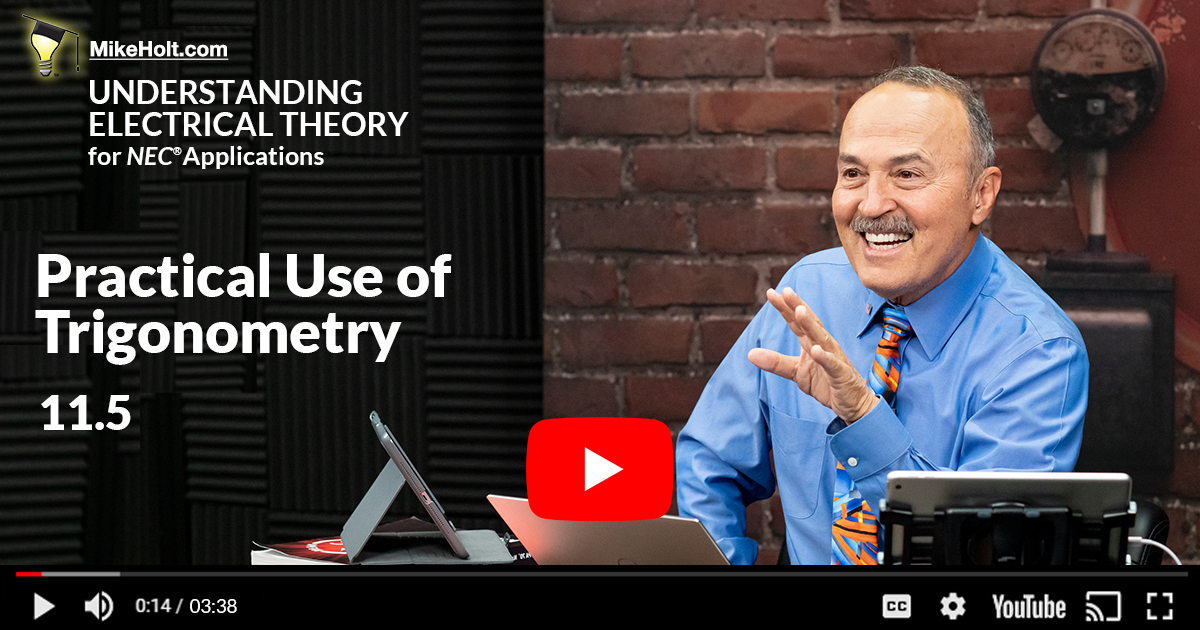|
What a lot of people don't realize is that the foundation for understanding the NEC rules for electrical installations is electrical theory! Whether you're a first-year apprentice still struggling to understand the difference between a volt or ampere, or a veteran electrician trying to sharpen your troubleshooting skills, this product has something for you. We're sharing this clip from the program to introduce you to the importance of this topic. Please feel free to share this with your friends and co-workers, and for more videos and content on this topic, check out our Electrical Theory Video Library that includes the full program and digital textbook.

| Practical Use of Trigonometry |
The content below is extracted from Mike Holt's Understanding Electrical Theory for NEC Applications textbook.
| |

Click here or on the thumbnail to the left to view or download the PDF of this section. (2 pages, 13Pr4 KB)
|

|
|
Click on the image above to watch the video
|
If you panic just hearing the word trigonometry, you're probably not alone. But once you learn that trigonometry is just the study of triangles and the relationships of angles and ratios of lengths, it all begins to make sense. That's when you can begin to understand trigonometry as applied to the electrical trade.
Take a minute to read the text and watch the video as video team member Brian House explains some angle and distance calculations, and how those techniques might be applied in the field.
Click on the image to the right to watch the video and be sure to download the PDF to follow along.
|
|
For more information on this topic, get a copy of Mike Holt's Understanding Electrical Theory video program and textbook.
|
|
|
We'd
love to hear from you about this series, and the ways you're using it.
Send us your comments and feedback by clicking on "Post a Comment"
below. Look out for the next part in this series a month from now, and
please share with your colleagues. |
|
|
|

